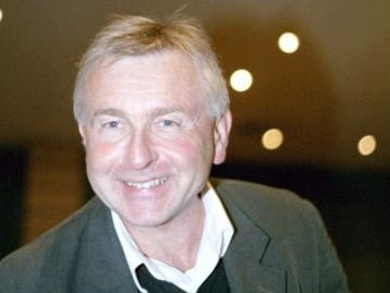Theoretical chemist Professor Gernot Frenking, Emeritus at the University of Marburg, Germany, celebrates his 70th birthday on January 23, 2016.
Professor Frenking’s research interests include dative bonding in main-group compounds, bonding analysis of molecules with unusual bonds, and reaction mechanisms in small-molecule activation.
Gernot Frenking studied chemistry at the Rheinisch-Westfälische Technische Hochschule (RWTH) Aachen, Germany, and received his Ph.D. from the Technical University Berlin, Germany, in 1979 for theoretical work on phosphorus(III) compounds. He finished his habilitation, also in Berlin, in 1984. After one year as Visiting Scientist at the University of California, Berkeley, USA, working with Henry F. Schaefer III, he joined the Stanford Research Institute, Menlo Park, CA, USA, as staff scientist in 1985.
In 1990, Gernot Frenking became Professor for Computational Chemistry at the University of Marburg, Germany, and in 1998, was named Full Professor for Theoretical Chemistry. He remained in Marburg until his retirement in 2014. He continues his research there as Professor Emeritus and also works as Ikerbasque Visiting Research Professor at the Donostia International Physics Center (DIPC), San Sebastian, Spain.
Among other honors, Professor Frenking has received the Elhuyar-Goldschmidt Prize by the Real Sociedad Española de Química (Spanish Royal Society of Chemistry, RSEQ) in 2007, the Schrödinger Medal of the WATOC (World Association of Theoretical and Computational Chemists) in 2009, and the Hans Hellman Research Professorship Award of the University of Marburg in 2012. He serves as Editor of the Journal of Computational Chemistry.
Selected Publications
- Carbon Monoxide Bonding With BeO and BeCO3: Surprisingly High CO Stretching Frequency of OCBeCO3,
Mohua Chen, Qingnan Zhang, Mingfei Zhou, Diego M. Andrada, Gernot Frenking,
Angew. Chem. Int. Ed. 2015, 54, 124–128.
DOI: 10.1002/anie.201406264 - The Fate of NHC-Stabilized Dicarbon,
Dayne C. Georgiou, Bradley D. Stringer, Conor F. Hogan, Peter J. Barnard, David J. D. Wilson, Nicole Holzmann, Gernot Frenking, Jason L. Dutton,
Chem. Eur. J. 2015, 21, 3377–3386.
DOI: 10.1002/chem.201405416 - Silavinylidene Stabilized by an N-Heterocyclic Carbene: A Theoretically Predicted Stable Molecule,
Jing Xu, Yi-Hong Ding, Diego M. Andrada, Gernot Frenking,
Chem. Eur. J. 2014, 20, 9216–9220.
DOI: 10.1002/chem.201403252 - Coinage Metals Binding as Main Group Elements: Structure and Bonding of the Carbene Complexes [TM(cAAC)2] and [TM(cAAC)2]+ (TM = Cu, Ag, Au),
Paul Jerabek, Herbert W. Roesky, Guy Bertrand, Gernot Frenking,
J. Am. Chem. Soc. 2014, 136, 17123–17135.
DOI: 10.1021/ja508887s - Dative Bonds in Main-Group Compounds: A Case for More Arrows!,
Gernot Frenking,
Angew. Chem. Int. Ed. 2014, 53, 6040–6046.
DOI: 10.1002/anie.201311022 - The Chemical Bond,
Gernot Frenking, Sason Shaik,
Wiley-VCH, Weinheim, 2014.
ISBN: 978-3-527-33318-9 - Nearly Degenerate Isomers of C(BH)2: Cumulene, Carbene, or Carbone?,
Shiblee R. Barua, Wesley D. Allen, Elfi Kraka, Paul Jerabek, Rebecca Sure, Gernot Frenking,
Chem. Eur. J. 2013, 19, 15941–15954.
DOI: 10.1002/chem.201302181 - Energy decomposition analysis,
Moritz von Hopffgarten, Gernot Frenking,
Wiley Interdiscip. Rev.: Comput. Mol. Sci. 2012, 2, 43–62.
DOI: 10.1002/wcms.71 - Unicorns in the world of chemical bonding models,
Gernot Frenking, Andreas Krapp,
J. Comput. Chem. 2007, 28, 15–24.
DOI: 10.1002/jcc.20543
Also of Interest
- Theoretical Chloride Clusters to Help Chemical Engineers and Geochemists,
David Bradley,
ChemViews Mag. 2014.
DOI: 10.1002/chemv.201400016
The stepwise solvation mechanism of free gaseous dichloride anion pairs - Double Donation at Work in “Carbones”,
ChemViews Mag. 2013.
The carbon compounds “carbones”, recently discovered, have now been shown to stabilize cations other than BH2+ - New Type of Metal-Carbon Bond,
David Bradley,
ChemistryViews.org 2013.
A new type of metal-carbon bond that forms at the edges of aromatic compounds could open up a new field of structures - How Many Atoms Fit Into C60,
ChemViews Mag. 2011.
How many rare gas atoms can be placed into a fullerene cage until the pressure becomes large enough to break the framework?




